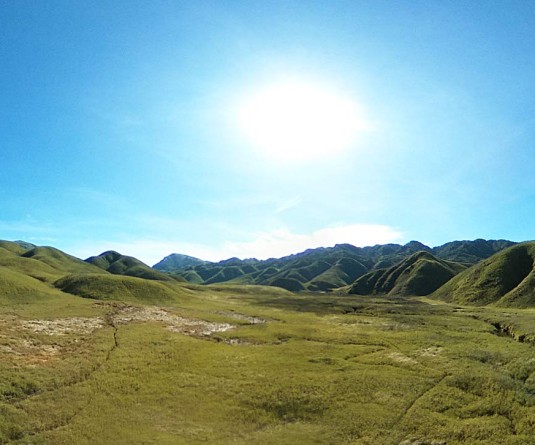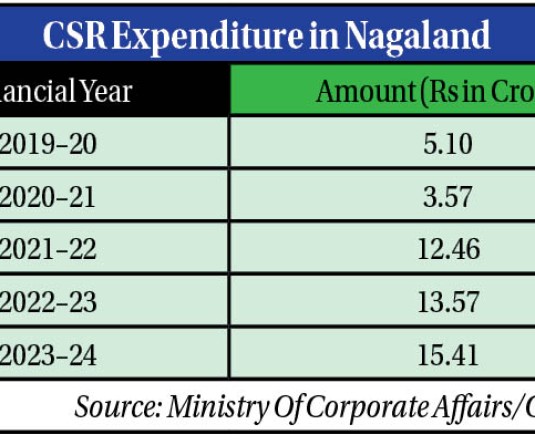Landslide-affected stretch of National Highway-29 at Liezocha, Old BRTF, Kohima. Nagaland falls in Zone V, the highest hazard zone on India’s Landslide Hazard Zonation Map. (Morung Photo)
.jpg)
Atono Tsükrü Kense
Kohima | September 27
Landslides in Nagaland have become an all-too-familiar tragedy – claiming lives, destroying homes and cutting off lifelines.
Every monsoon, the same grim pattern unfolds – landslides, mudslides, rock fall, homes tilting or sinking and lifelines washed away as highways transform into rivers. While people often blame the rains, Geologists said, the truth is far more complex as it is a combination of the state’s delicate geology and unpredictable weather pattern and worsened by the increasing weight of human activity on the already unstable slopes.
To better understand Nagaland’s vulnerability and what can be done to reduce the risks, The Morung Express spoke with Dr Temsulemba Walling, Associate Professor, Department of Geology, Nagaland University, and David Lhoupenyi, a Geologist from the Directorate of Geology & Mining who has been studying the state’s landslide risks.
.webp)
Why Nagaland is prone to landslides
Among several factors, Dr Walling observed water as the ‘aggravating or triggering’ factor. During monsoons, he explained that heavy rain infiltrates the soil, increases pore pressure, and eventually causes slopes failures.
He also pointed out that the Naga Hills are part of the tectonically active northern extension of Indo-Myanmar Range, where rocks are deeply folded, fractured, and often weakened by clay layers. “The continuing subduction has caused the development of an immature and complicated mountainous terrain prone to neotectonic maladies” he stated.
However, despite the state’s unique geology, Dr Walling reminded that landslides are a global phenomenon in all hilly terrains.
Clarifying that these are purely his personal opinion and not an official statement, Lhoupenyi said Nagaland falls in Zone V, the highest hazard zone on India’s Landslide Hazard Zonation Map adding “it is made up of young mountains of mostly shale and sandstone coupled by high rainfall in the state and human activities without much plan of systematic mitigation especially on the weak zone section.”
.webp)
Categorisation of landslides
According to Lhoupenyi, Nagaland witnesses many types of slope failures such as rockfall/slide, rainwash, mudflow, gully erosion, sheet erosion, translational landslide, earthflow, Rotational landslide, complex landslide (slumping + earthflow) etc.
A landslide, Dr Walling explained is a loose slope movement or failure categorised in terms of the water content, materials involved, and the type of movement.
Citing the report on “Landslide Inventory Mapping Post monsoon 23 & 24, Nagaland State” prepared by NGISRSC, he said, there were 964 active and reactivated landslides in Nagaland during 2023, with more than 100 identified in 2024, and the most common occurrences in Nagaland are debris flow or slides, and rockfall and slides. However, he noted that the incidences of flash floods that ‘we’ are experiencing nowadays may or may not be directly related to landslides.
.webp)
Are humans making the problem worse?
“Yes,” says both the geologists stating that that anthropogenic (human activities) such as road construction without proper mitigation, quarrying and settlement expansion have aggravated the problem.
“Considering the fact that human activities are largely responsible for bringing about radical climate change, and climate change being one big factor responsible for landslide events, it can be inferred that the Anthropogenic factor is taking precedence over natural control for recent events,” stated Dr Walling.
With the young geological terrain of Nagaland by nature is very susceptible to slope failure and subsidence, Lhoupenyi citing the four lane road construction, said it has caused more slope failures than two lane road, and two lane roads than intermediate road. “Toe cutting along the hillslope without much water pore pressure due to surface percolation will lead to gravity failure, therefore the type of rock or soil matters a lot” he explained.
.webp)
Role of climate change
Stating that climate change is amplifying the problem, Dr Walling said rainfall has become more intense, with increased incidence of cloudbursts landslides, and flash floods in ‘our’ state and elsewhere.
He informed that a telemetric digital rainfall recorder installed by Nagaland University near Kezanu and Kimho (Old KMC dumping area) landslide area recorded 28.6mm of rain in half an hour (6:30 to 7 am) on June 28. While such heavy rainfall during a short span of time is commonly associated with slope failures, it also increase the erosivity of water, leading to the formation of rills and gullies, accelerate toe erosion, and fast saturation of soil, causing subsidence and other slope failures, said Dr Walling.
Cloudburst, he explained is largely responsible for flash floods and their deposits, which are observed along the Kohima-Dimapur highway. The more deep-seated landslide is dependent on the duration and amount of precipitation, along with other geologic factors and neotectonism, such as in Noklak and Tuensang town, he stated.
Explaining that there will be more landslides where there is more rainfall in a year, Lhoupenyi also pointed out that there are landslides which are very active where there is subsidence throughout the year or during rainy season.
“The massive movement in major landslides takes place in a cycle of 2-5 years, 10 years, 15 years, 20 years, 50 year or more” he explained.
This is the first of the two part series.






